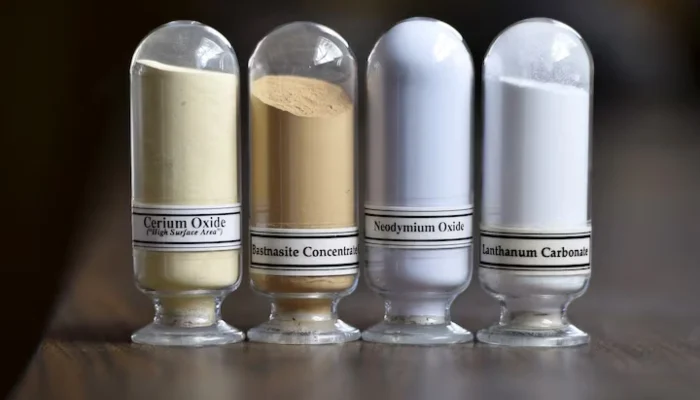US President Donald Trump stated in February his desire for Ukraine to provide the United States with rare earth minerals in exchange for financial support towards Kyiv’s war efforts against Russia. This comment seemingly aligns with a component of a war strategy, referred to as the “victory plan,” which President Volodymyr Zelenskiy presented to Kyiv’s allies, including Donald Trump, last year.
Among other provisions, the plan suggests establishing agreements with foreign partners to facilitate joint access to Ukraine’s strategically valuable resources. It remained unclear whether Trump’s reference encompassed all types of critical minerals or was exclusively limited to rare earths. He indicated that the United States was seeking to finalize a deal with Ukraine for “their rare earths and and other things.”
Rare earths constitute a group of 17 metallic elements essential for manufacturing magnets that convert power into motion, used in electric vehicles, cell phones, missile systems, and other electronic devices. There are no known substitutes for these metals. China currently stands as the world’s leading producer of rare earths and numerous other critical minerals. Trump has also expressed interest in integrating Greenland, an autonomous territory of Denmark also possessing significant rare earth deposits, into the US, particularly since his re-election campaign.
The US Geological Survey identifies 50 minerals as critical, including various types of rare earths, nickel, and lithium. According to data from Ukraine’s economy ministry, the country holds deposits of 22 out of the 34 minerals designated as critical by the European Union. These include industrial and construction materials, ferroalloys, precious and non-ferrous metals, and certain rare earth elements. Ukraine also possesses substantial coal reserves; however, the majority of these are currently under Russian control in occupied territories.
Why are Rare Earths Important?
The 17 silvery-white rare earth minerals are not inherently scarce in the Earth’s crust. However, discovering economically viable deposits proves more challenging. The true scarcity lies in the intricate process required to separate them into the specific materials necessary for producing permanent magnets, which are utilized in a diverse range of critical products.
China accounts for approximately 60% of global rare earth mine production. However, its share dramatically increases to 90% for processed rare earths and magnet output. Below are the complex stages rare earths must undergo to become magnets used in electric vehicles and wind turbines—the two primary sectors driving demand in the coming years.
Mining: Ore is first extracted from either an open-pit or underground mine. It is then crushed and transported to a processing plant, typically located near the mine site. The ore contains a small percentage of rare earths, but other minerals are removed through flotation, magnetic, or electrostatic processing to yield a mixed rare earth concentrate, often containing 60% to 70% rare earths. Other operations produce a rare earth concentrate as a byproduct of mining waste or from other metal extractions, such as mineral sands or iron ore.
Radioactivity Removal: Certain types of ore, like monazite, necessitate an additional step to eliminate radioactive thorium or uranium from the ore, often through the use of acid.
Separation: One of the most challenging steps involves separating the individual rare earth elements from each other. This technology was initially developed in US government research laboratories after World War II. Separation can be achieved using ion-exchange technology. It can also be performed using solvents such as ammonia, hydrochloric acids, and sulfates, although some of these chemicals produce toxic wastes that may be carcinogenic. So-called light and heavy rare earths must pass through distinct separation circuits where individual rare earths are extracted. Newer, more environmentally friendly technologies are currently under development but are not yet widely adopted.
Metals/Alloys: Once separated, rare earth oxides are then transformed into rare earth metals through electrolysis. The most commonly used permanent magnets combine the rare earths neodymium and praseodymium with iron and boron. These are placed in a vacuum induction furnace to form an alloy. Small quantities of the rare earths dysprosium and terbium are often added to enhance the magnet’s heat resistance.
Magnets: The alloy ingots are broken down and jet-milled in a nitrogen and argon atmosphere into micron-sized powder. This powder then undergoes a high-temperature and high-pressure process called “sintering” before being pressed into the final magnet form.



